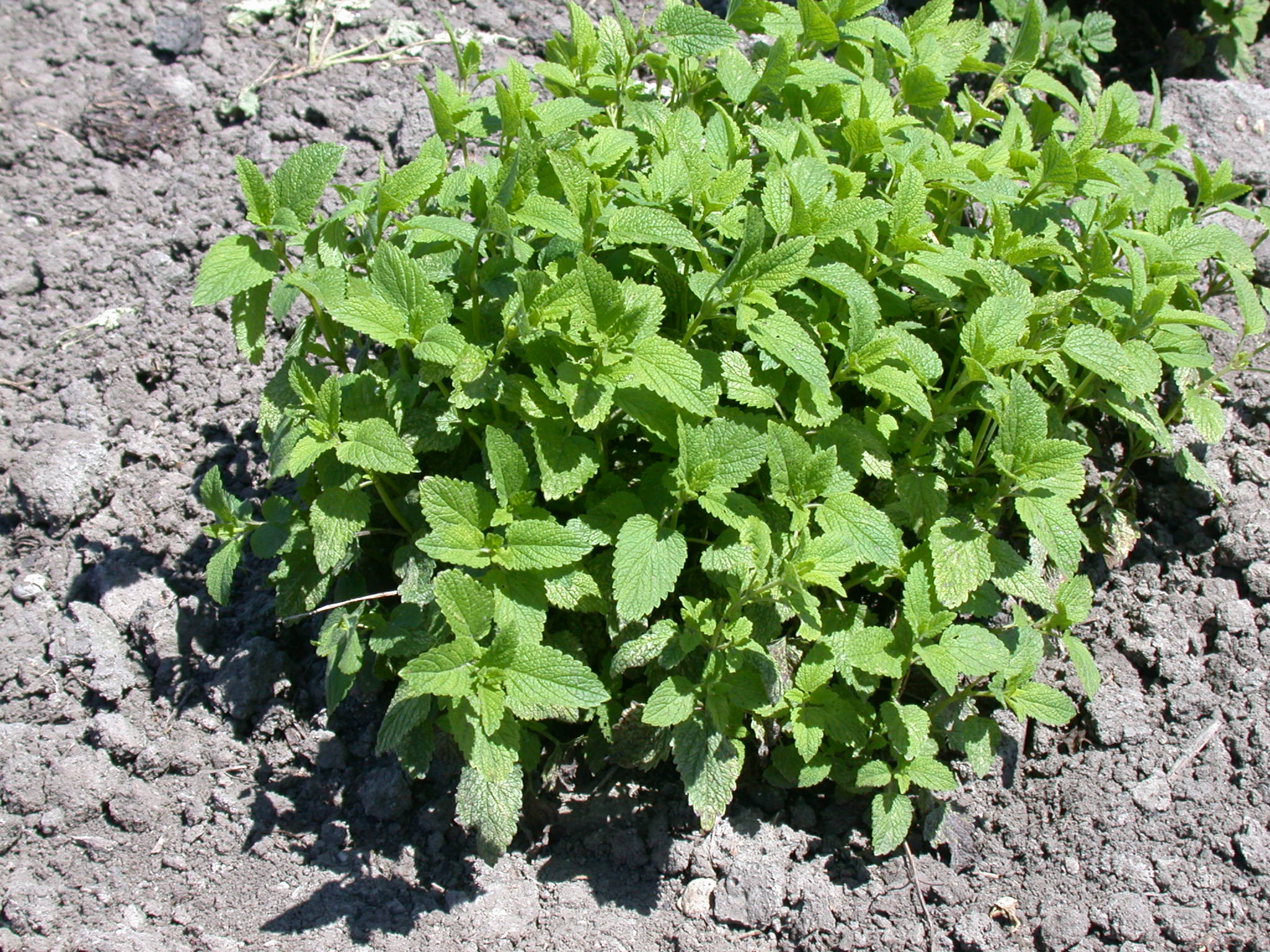Melissa officinalis L. – Lemon balm
Melissa officinalis is a herbaceous, perennial aromatic plant in Lamiaceae family (H). Roots are thin, yellowish-brown, rhizome is wooden. Rhizomes develop several overground stems too. Plant grows to 50-100 cm height, stems are branched. Leaf arrangement is opposite decussate, the leaves have 3-6 cm long stalks, leaf shape is ovate, the marginals are dentate. The leaves are slightly covered with hair, dark-green, vesicular surfaced, and have a pleasant lemon odour. Flowers are compound, white, they bloom during summer, from early July to August. The flowers are filled with nectar, attract bees. Fruits are 1.5-2 mm long, ovate, shiny almost black. Thousand seed weight: 0.6-0.7g.
Lemon balm is native to South Europe (Eastern coasts of Mediterranean Sea), in Hungary it is cultivated, but several wild populations are known in wooded, dry habitats. The plant prefers warm, sunny places and well drained, calcic soils.
Lemon balm’s drugs are the dried flowering stems (Melissae herba) and the dried leaves (Melissae folium), the latter one is mentioned by Ph.Hg.VIII., ESCOP- and E-monographs. The essential oil distilled from the fresh or dried herb (Melissae aetheroleum) is also an important drug. The high quality drug contains at least 4 % rosmarinic acid, according to the standards.
The overground organs of the plant accumulate essential oil. The volatile oil content is the highest in the leaves, it can reach 0.2-0.5 %. The compounds are: citral, citronellal, geraniol, linalool. Lemon balm also contains phenolic agents: rosmarinic acid and flavonoids (luteoline, quercetin, kaempferol, apigenine).
Lemon balm has sedative effect, internally it is used for sleeping disorders, gastric diseases, nervousness. The water extract of Mellisa officalis has antiviral effect, externally it is applied for curing herpes. The essential oil and the alcoholic extract are used for healing neuralgia, gastric problems.


